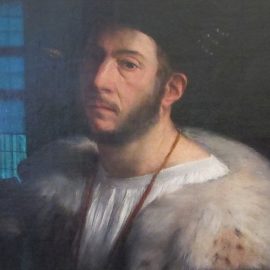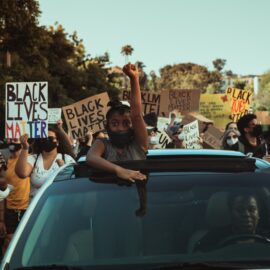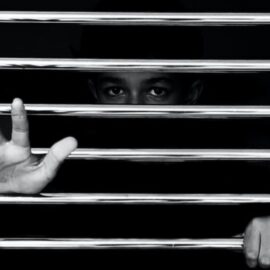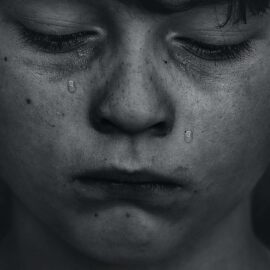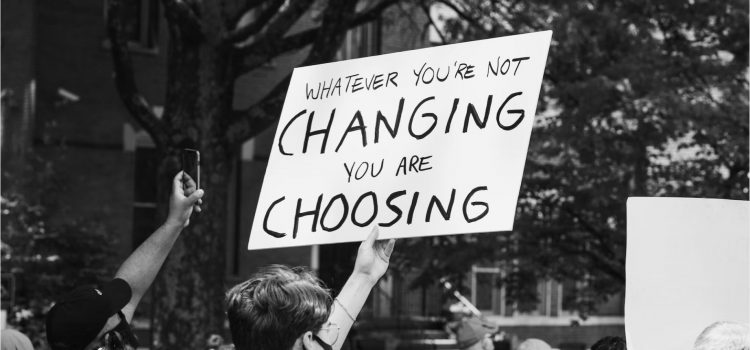

This article gives you a glimpse of what you can learn with Shortform. Shortform has the world’s best guides to 1000+ nonfiction books, plus other resources to help you accelerate your learning.
Want to learn faster and get smarter? Sign up for a free trial here .
What can we learn from real-life struggle stories? How do people rise from unbearable conditions to live a successful, happy life?
Life throws curveballs all the time, and sometimes you might feel like giving up. But it’s reassuring to know that other people have risen from their own unique challenges.
Let’s look at six real-life struggle stories that detail extraordinary people at their most vulnerable, all the way to their moments of success.
Inspirational Stories of Defeating Racial Discrimination
If you want to get to the heart of many issues people of color face around the world, you need to read these real-life struggle stories. You’ll learn how intelligent Black women were discriminated against in their own field of work, and how a famous comedian grew up in a country where he was born illegally.
The Black Women Who Helped Win the Space Race
During World War II, the gradual dismantling of the Jim Crow system of racial segregation began, as the demands of the war economy brought African-Americans and women into jobs and industries from which they had previously been excluded. This was especially true of the aeronautics and defense industry, which was crucial to the American war effort.
Hidden Figures by Margot Lee Shetterly tells the inspiring true story of a group of African-American women who made major contributions to the U.S. space program during its golden age at Langley Memorial Aeronautical Laboratory.
In the spring of 1943, Dorothy Vaughan, a schoolteacher from Virginia, filled out her application to work at Langley. In the fall, she received her answer: she was hired to work as a Grade P-1 Mathematician at Langley for the duration of the war. It was a position that would last over 30 years.
Despite the opportunity, new arrivals to Langley like Dorothy still had to face the prejudice of living and working in a segregated city of the American South at the height of the Jim Crow era. A separate area of the facility, known as West Area Computing, was reserved for the new Black female computers. This was symbolized most hurtfully by the sign on the table where they sat at the back of the cafeteria that read, “COLORED COMPUTERS.” In an act of defiance, the women of West Computing began tearing the sign down each day they saw it, a first shot across the bow for equality and dignity.
In 1951, a new 26-year-old native of Hampton Roads named Mary Jackson made her way to West Computing. From an early age, she had committed herself to helping young African-American women make the most of themselves—with a special focus on helping them prepare for college careers. But she, too, felt the sting of segregation—on one occasion at Langley, she was mocked by a group of white female employees for asking where the “colored” bathroom was (as white women, they found Mary’s question absurd—why would they know where her bathroom was?). However, Mary distinguished herself, earning a reputation as a trusted and capable mathematician. She was marked as someone who deserved to move ahead.
Another new arrival was Katherine Goble (later known to history as Katherine Johnson), a brilliant young mathematician from West Virginia. Katherine worked closely with an engineering group called the Pilotless Aircraft Research Division (PARD), which specialized in rocketry. Katherine was integral to the publication of technical reports that enabled the space program to put astronauts into orbit.
Pioneering Black female engineers and mathematicians like Dorothy Vaughan, Mary Jackson, and Katherine Johnson left an indelible mark on NASA, the struggle for African-American civil rights, and the United States itself. The story of the women of West Computing is one of hope and triumph over the harshest adversity. It is also one of empowerment—these women exercised real agency and control throughout their lives. They were protagonists who acted upon America and shaped its destiny, actors in the great drama of the nation’s history.
Trevor Noah: From Being a Crime to Comedian
Born a Crime is the real-life struggle story of a strong-willed Black mother and her mixed-race child as they traverse life in South Africa during apartheid. When comedian Trevor Noah was born in the mid-1980s, his birth was a crime under the laws of apartheid, which forbade whites and Blacks from mixing and procreating. Growing up during and after apartheid, Noah struggled to understand where he belonged in this racially divided environment.
In Soweto, the Black township Noah’s mother Patricia was from, Noah was kept indoors. If the neighbors or police caught wind of a mixed-race boy belonging to a Black family, Noah could be sent to an orphanage and his family imprisoned. A life without friends and freedom encompasses Noah’s earliest memories.
Even when Nelson Mandela was freed and apartheid abolished, Noah struggled to fit into a cleanly categorized race and felt pressured to. He felt Black because he was raised within the Black culture, but his light skin tone told another story. He looked like a person of color, but he was not culturally a person of color. He was partly white, but no one thought of him as such.
To counteract his ostracization, Noah became a master of languages. There were 11 official languages in South Africa, a policy created to ensure no Black tribe felt unrepresented in the new democracy. His mother made English his first language to give him a leg up in life, and he spoke her native language of Xhosa, his father’s language of German, the language of his oppressors (Afrikaans, created by the Dutch colonists pre-apartheid), and many other African tribal languages he picked up on the streets. Speaking the languages of others allowed him to relate and be viewed as “one of them,” rather than “different.”
Noah describes apartheid from an insider’s perspective, finding connections in his life that relate directly to the legacy of the laws. He was fortunate to have been able to change his circumstances and become a successful, financially independent person when he began a career as a comedian. He credits his mother for educating him and never forcing him to limit his life based on race. He credits the help of friends and family for supporting him when he was in trouble with the law and providing the resources he needed to make something of his life. He knows that without resources and a support system, he would have had no options beyond the fate of most Black South Africans: a life of poverty and survival.
Powerful Stories of Escaping Abuse
These real-life struggle stories depict adults who survived childhood abuse. From being denied proper medical attention to being starved in their own home, these authors overcame some of the most unfathomable challenges in their lives.
Take a look at Tara Westover and Dave Pelzer’s inspiring stories.
Tara Westover’s Story of Her Neglectful Childhood
Educated is the autobiographical struggle story of Tara’s Westover’s journey from being the child of extreme anti-government, anti-science, and religious fundamentalist Mormon parents to becoming a Cambridge- and Harvard-educated Ph.D.
Born in her family’s isolated home in the mountains of Idaho, Tara was denied proper medical treatment and education as a child. Her father, Gene, believed that public schools were a tool of the “socialist” U.S. government, meant to “brainwash” people. As such, he kept his children out of school and relegated them to a dubious homeschooling curriculum designed by his wife, Faye, who lacked any proper credentials for educating children. Because of this, Tara had enormous gaps in her knowledge—she barely knew the basics of elementary math and was deeply ignorant of key historical facts about the U.S. and the world.
When she was a teenager, Tara began to be abused by her older brother Shawn. On several occasions, he beat her, dragged her across rooms by her hair, stuck her face in the toilet, and even broke her wrist, toes, and ankles. Tara was tormented by the abuse and manipulated into believing that it had been her fault. Perhaps unsurprisingly, given their patriarchal worldview and deeply anti-feminist beliefs regarding women’s sexuality and role in the home, Tara’s parents turned a blind eye to Shawn’s violence and refused their daughter’s requests to intervene and protect her.
With the encouragement of her older brother Tyler, who had already found an escape through education, Tara took the ACT and was accepted into Brigham Young University, despite having no formal education at all. As a student, Tara began to learn just how deep her ignorance ran. In one class discussion, she inadvertently revealed that she had never heard of the Holocaust. But she was able to learn from her early missteps, make up ground, and began earning Bs and As in her courses.
Eventually, she did well enough to earn a place in a prestigious study abroad program at Cambridge University in England where she impressed seasoned and renowned scholars. Later, Tara was accepted as a graduate student and then a Ph.D. candidate at Cambridge and earned a coveted Visiting Fellowship at Harvard. Ten years after first setting foot at BYU, she defended her thesis and earned her Ph.D.: she had become Dr. Westover.
After her parents refused to believe her about Shawn’s repeated acts of abuse, Tara was left with no choice but to break off contact with her family. She knew that she needed to sever her ties with their cycle of abuse, paranoia, and control. As an accomplished woman, she was now determined to step fully into her new life and use the power of her intellect to shape her own path. She now saw that her education had been more than just the acquisition of fancy degrees or titles. It had been an act of revolution, self-emancipation, and liberation from the bonds of ignorance and control.
How Dave Pelzer Recovered From Child Abuse
From the ages of four to 12, Dave “David” Pelzer suffered brutal physical and psychological abuse at his mother’s hands. When he was finally taken from her custody, Pelzer’s case was one of the worst cases of child abuse ever reported in California
A Child Called ‘It’ is Pelzer’s autobiographical account of his experience, told through his childhood perspective; the book is a rare look at the epidemic issue of child abuse through a victim’s lens.
Despite David’s earliest childhood memories being happy ones, his mother began abusing him when he was in first grade. His mother would single out David among his brothers by giving him no presents during Christmas, shoving his face into a mirror, and leaving David at his aunt’s house while the rest were on vacation.
The worst David’s mother would do to him was force him to lie on top of a stove and withhold food. Even though David would steal food at school, his mother would force him to vomit every day to ensure he didn’t eat anything. Things began to worsen when his mother would isolate David from the rest of the family by forcing him into the role of “family slave.” She would do this by:
- Forbidding David from looking at or talking to anyone
- Forcing David to stand in the garage each night while his family eats dinner
- Forbidding David from playing or watching TV with his brothers
- Never using David’s name, calling him only “the Boy” and “It”
- Banishing David to sleep on an old army cot in the cold garage
Even though his mother stabs David, continues to starve him, and locks him in a bathroom full of a noxious mixture of ammonia and Clorox, David’s father doesn’t protect him. His father spends time in bars or at work to avoid being at home. David, at one point, began to lose hope that the abuse would stop and hoped that if his mother was going to kill him, she’d do it quickly.
Luckily, freedom was in sight. When David was in fifth grade, he told the school nurse and a police officer what his mother was doing to him, and he was rescued. As an adult, David attributes his survival to the fact that he took control of himself and his circumstances in any way he could. He also credits his horrific experiences for his strength, adaptability, intrinsic motivation, and unique perspective on life.
After he escapes, David vows to make the most of his life by creating success and pushing himself to be the best person he can be. He finds community and a sense of purpose as a member of the United States Air Force, and he builds a loving relationship with his own son.
Breaking the Cycle of Poverty
Poverty is a dangerous cycle that people can get trapped in if they grow up in it. Since it’s all they know, it makes it harder to escape. And in the cases of these real-life struggle stories, poverty became a gateway for abuse and neglect.
These are the struggle stories of women who broke the cycle of poverty to make a better life for themselves and their loved ones.
How Stephanie Land Escaped Poverty and Abuse
Maid is Stephanie Land’s memoir of her struggle to make ends meet as a single mom by working as a housekeeper and relying on government assistance. Since Maid was published, it has been adapted into a popular, critically acclaimed Netflix miniseries.
But before her Netflix success, Land was doing backbreaking labor under difficult conditions while caring for her daughter and studying to get a college degree—all while dealing with her abusive ex-boyfriend.
Even though she was raised in a middle-class family, Land comes from generations of poverty and abuse—a cycle that she, unfortunately, found herself in. During her pregnancy with her daughter Mia, her boyfriend Jamie began a pattern of angry outbursts and threatened Land that he won’t pay child support. This never let up when she gave birth.
Land eventually decided to leave Jamie, but it didn’t get easier from there. Land began working for one maid service, then another. She made minimum wage, which in 2009 in Washington State was $8.55 an hour. The company she ended up with didn’t pay for travel time, and Land sometimes spent up to two hours a day traveling from house to house. It took her at least an hour of work every day just to pay for the gas to get there. Land was unable to survive on her income from the maid service, so she later took on her own clients as well.
While Land received some government funding, there were gray areas she came across. When Land injured herself at work (which happened often), she was told she made too much for Medicaid, but couldn’t afford to see a doctor without health insurance.
Land and Mia also relied on food stamps to eat. Their diet wasn’t varied because they couldn’t afford much. Land gave more of the food to Mia and often relied on coffee to stave off her own hunger. She ate a lot of instant noodles and only bought fresh produce if it was very inexpensive. At one point, the rules for the food stamp program changed, and Land was allowed to spend exactly $10 a month for produce—no more. Because it was cheaper, she had to buy unhealthy food full of artificial ingredients.
Rising from her situation, Land was able to quit her job as a maid to attend college on scholarships so she could become a writer. She ignored Jamie’s threat to take their daughter away and moved to Missoula to attend college and start a new life with financial stability and freedom.
Jeannette Walls’s Nomadic Childhood
The Glass Castle is the harrowing real-life struggle story of Jeannette Walls’s life growing up in poverty with wayward parents. Following the Walls family through the desert to the coal-mining region of West Virginia to the fast-paced life of New York City, Walls’s memoir explores the nature of family, loyalty, and tragedy and what it takes to survive together and apart.
During Jeannette’s early childhood, Walls’s alcoholic and often unemployed father, Rex, moved the family around the desert like a traveling circus. They’d stop in one small cowpoke town after another, set up a life for a few weeks to months, then pack up and start again somewhere else. Rex said they had to keep moving to stay ahead of the law, which was always on his tail, or wealthy businessmen who wanted to steal his ideas. Rex fancied himself an inventor and always had some scheme or another that was sure to help him strike it rich. In reality, Rex was simply dodging bill collectors.
Jeannette’s siblings—an older sister, Lori, a younger brother, Brian, and later, a baby sister, Maureen—were often left to their own devices for sustenance. Their mother, Rose Mary, had a lifelong dream of being an artist and spent most of her time painting and what little money she had on art supplies. Rose Mary’s art was her priority, even over feeding her children.
Jeannette and her siblings surmounted great adversity in their lives to become stable professionals. Not only were they always hungry, but they were also always too poor to afford clothes, shoes, and other necessities, like toothpaste, heat, and running water. The children were also victims of many close calls with their safety along the way, such as falling out of cars, getting burned on stoves, and a near incident of sexual assault.
Eventually, Rex’s drinking became a full-time job and most of the kids had enough. One by one, almost all the teenagers left their parents to pursue their own dreams and live a stable life. Jeannette, in particular, took a job as an editorial assistant for a high-profile magazine. The other children were also doing fairly well with their lives.
Despite her troubled upbringing, Jeanette took her hardships and found success out of them. She wrote about her story in a memoir, which was adapted into a film starring Brie Larson, Woody Harrelson, and Naomi Watts.
Final Words
If you ever feel like you can’t get through a tough situation, refer back to these real-life struggle stories. They inspire a sense of hope that people need to remind themselves that they can achieve anything, even if life’s obstacles try to get in their way.
Do you know of any other motivational real-life struggle stories? Leave some examples in the comments below!

Want to fast-track your learning? With Shortform, you’ll gain insights you won't find anywhere else .
Here's what you’ll get when you sign up for Shortform :
- Complicated ideas explained in simple and concise ways
- Smart analysis that connects what you’re reading to other key concepts
- Writing with zero fluff because we know how important your time is

